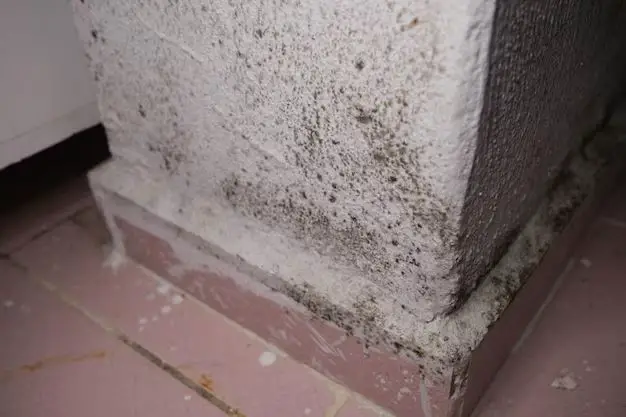When installing drywall, properly sealing the corners and joints is crucial for preventing cracks and helping the finished walls look smooth and professional. Using the right type of caulk or sealant is important for creating durable, long-lasting seals in drywall corners.
Page Contents
Silicone Caulk
Silicone caulk is one of the most popular and effective options for sealing drywall corners. Here are some of the benefits of using silicone caulk:
- Flexible – Silicone caulk remains flexible after drying, allowing it to expand and contract with natural movements of the walls without cracking or pulling away.
- Waterproof – Silicone is highly water-resistant and provides excellent protection against moisture damage.
- Strong adhesion – It bonds very well to most common building materials, including drywall.
- Long-lasting – Properly applied silicone caulk can last for many years without needing to be reapplied.
- Resists mold and mildew – The silicone formula prevents mold and mildew growth.
These properties make silicone one of the best choices for sealing corners between drywall panels, around tubs and showers, and anywhere else that needs a waterproof, flexible seal. Some popular silicone caulk brands include GE Silicone I, DAP Dynaflex Ultra, and Red Devil Silicone Plus.
Acrylic Latex Caulk
Acrylic latex caulking is another good option for drywall corners:
- Paintable – Unlike silicone, acrylic latex caulk can be easily painted over with no prep if needed to match your wall color.
- Affordable – Acrylic caulks typically cost less than silicone.
- Low odor – Acrylic latex has less odor than other caulk types during application.
- Easy water clean-up – Tools and spills can be cleaned up with just water.
On the downside, acrylic latex caulk is not as flexible or waterproof as silicone. But it works well for sealing cracks and joints between drywall panels in interior rooms and areas not exposed to moisture.
Butyl Rubber Caulk
Butyl rubber caulk is another option with properties between silicone and acrylic latex:
- Good adhesion – Sticks well to most common building materials.
- More flexible than acrylic – It will expand and contract better than acrylic without cracking.
- Better water resistance than acrylic – Provides moderate water protection.
- Paintable – Can be painted over if desired.
So butyl rubber can be ideal for drywall corners that need a bit more flexibility and water resistance than acrylic latex provides. It works well in bathrooms, kitchens, and other areas prone to moisture.
Which is Best?
For most situations, silicone caulk is the best choice for sealing drywall corners. The high flexibility, waterproofing, and longevity outperform acrylic and butyl caulk. However, consider acrylic or butyl for interior rooms and areas where the joints just need basic sealing.
Here is a comparison of the key differences:
| Caulk Type | Flexibility | Water Resistance | Paintable |
|---|---|---|---|
| Silicone | Excellent | Excellent | No |
| Acrylic Latex | Poor | Poor | Yes |
| Butyl Rubber | Good | Moderate | Yes |
So in summary:
- For high moisture areas like bathrooms and kitchens, use silicone caulk.
- For interior drywall seams not exposed to moisture, acrylic latex works well.
- Butyl rubber caulk is good compromise between acrylic and silicone.
Joint Preparation
Proper drywall joint preparation is also critical for getting a lasting seal:
- Ensure joint compound is fully dried before caulking.
- Clean and dry the joints thoroughly to remove any dust.
- Fill any large gaps or voids with drywall compound first.
- Apply painter’s tape along both sides of the joint to keep the caulk lines straight and neat.
Caulk Application Tips
Follow these tips when applying caulk to drywall corners and joints:
- Load the caulk gun and cut the nozzle at a 45 degree angle to the desired bead size.
- Hold the gun at a consistent angle as you smoothly apply the caulk into the joint. Keep an even pressure on the trigger.
- Make sure the caulk penetrates fully into the joint and makes full contact rather than just bridging across the surface.
- After applying, use a plastic caulk smoothing tool or finger to shape the caulk into a neat, consistent bead and smooth down the surface.
- Remove the painters tape promptly after smoothing the caulk while it is still wet.
- Allow the caulk to fully cure based on the manufacturer’s recommendations before painting or exposing to water.
Top Caulk Brands
These top brands consistently offer high-performing caulk products suitable for drywall corner applications:
Silicone Caulk
- GE Silicone I
- DAP Dynaflex Ultra
- Loctite Polyseamseal
- Red Devil Silicone Plus
Acrylic Latex Caulk
- DAP Alex Plus
- Red Devil Acrylic Plus
- GE Advanced Silicone 2
- Loctite Titefoam
Butyl Rubber Caulk
- DAP Dynaflex 230
- Loctite Power Grab
- NP1
- Tower Sealants Butyl Rubber Caulk
Be sure to check manufacturer specifications and choose a caulk rated for a minimum of 20-25 year durability.
Conclusion
In summary, silicone caulk is generally the best choice for sealing drywall corners and joints, thanks to its flexibility, adhesion, and waterproofing. Make sure to thoroughly prepare joints first, then apply the caulk smoothly and neatly. Acrylic or butyl caulk can also work well for interior rooms. Using the right caulk and application techniques will result in long-lasting, crack-free drywall corners.
